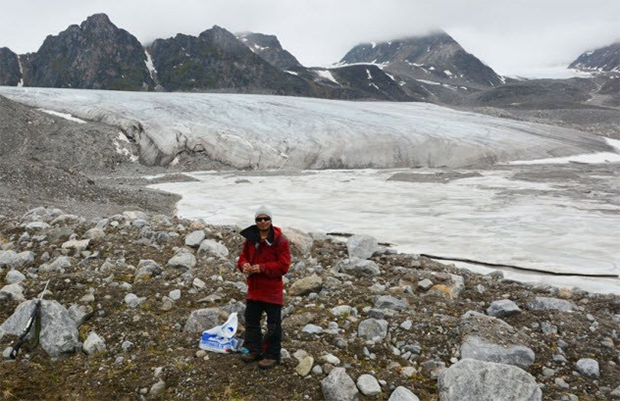|
The
relationship between human beings and our natural world has always been
a complex one. Although Americans’ frontier ancestors cultivated in us a
man vs. nature mentality, the modern world requires a subtler approach.
The effects we have on our environment—and it on us—are not always so
clear-cut.
|
|
Warmer Climates Contribute To Violence
Many research studies over several decades have consistently suggested
that rates of violent crime are always higher nearer the equator in
warmer climates. But none of them have been able to determine why.
So far, there are two leading guesses. First, hot weather makes people
uncomfortable and irritated and, therefore, more violent. Second, people
go outside and interact more in warmer weather, so there are more
opportunities for violent conflict.
But researchers at Vrije Universiteit Amsterdam, using the CLASH (CLimate
Aggression and Self-control in Humans) model, believe that it is not so
much the heat that affects behavior but the minor variation in
temperature in these areas.
Without the need to plan for coming seasons, people can focus on the
present with less regard for the future. This “fast life strategy” can
manifest itself with lax attitudes toward time and, oddly, birth
control. It may also lead to less self-control and, thus, more acts of
violence. |
|
 |
|
Cigarette Butts Are A Serious Threat To Marine
Life
Of the billions of cigarette butts produced every year, only a fraction
are disposed of properly and an insane number of those that are not end
up in the ocean. In fact, cigarette butts are the most common type of
trash in the world’s oceans.
These butts are composed of thousands of tiny plastic particles woven
into fiber that breaks up in the ocean environment. One study has shown
that the hazardous materials contained in a single butt can sufficiently
contaminate 1 liter (0.26 gal) of water so as to kill any fish swimming
in it.
Although some enterprising companies are working to implement widespread
butt recycling into perfectly safe plastic products, the understandable
stigma around carcinogens has so far prevented such efforts from gaining
much steam. |
|

|
|
Humans Drive The Evolution Of New Species
Hunting, encroachment on natural habitats by humans, and other
environmental changes have all contributed to drive thousands of species
to extinction over the centuries. But some human behaviors can produce
new species that would not have existed otherwise.
A type of underground mosquito native to London—with DNA and breeding
habits distinct from normal mosquitoes—was derived from insects that
fled to the man-made underground tunnels during the bombings of World
War II. No longer able to breed with other mosquitoes, they constitute a
separate species created circumstantially by humans.
This is an example of relocation, one of the several means by which this
phenomenon can assert itself across wide varieties of species.
Especially troubling is hunting, through which “unnatural selection” or
the elimination by hunters of animals with desirable traits can run
completely counter to evolution. |
|

|
|
Exposure To Nature Improves Mental Health
In 2013, a University of Essex study found that clinical depression
scores dropped markedly in 71 percent of participants after taking short
nature walks. Amusingly, these results were contrasted against a control
group whose participants were tested after taking their walks in a
shopping center. This only reduced depression scores by 45 percent,
while 22 percent actually felt more depressed.
In addition, a 2016 study at the University of Southern California
observed a drop in aggressive behavior in teenagers with even short-term
exposure (up to six months) to green space within 1,000 meters (3,300
ft) of their neighborhoods. This occurred regardless of age, income
level, race, or level of education.
“Good” and “bad” neighborhoods saw a similar effect. Somehow, the
study’s authors arrived at the rather specific conclusion that
increasing greenery in urban areas could result in a 12 percent decrease
in violent, aggressive behavior among California teens. |
|
 |
|
Increased Vegetation Growth Is Resulting From
Climate Change
Glacial melt and the gradual disappearance of long-standing ice shelves
caused by global climate change has produced an auxiliary effect. In
many places where the ice is receding, green is appearing in its place.
Absent in only a few notable areas of significant melt, the decades-long
trend was pointed out by NASA via satellite imagery. Scientists at Oak
Ridge National Laboratory ran these observations through a series of
simulated “climate model runs” to determine whether certain events or
long-term changes, such as greening, were more statistically likely to
take place in models that include greenhouse gases.
Sure enough, the models with greenhouse gases ended up looking a lot
like NASA’s satellite imagery. Aside from receding ice and warmer
temperatures, it is also highly likely that increased amounts of
nitrogen in the atmosphere—which plants love—is another contributing
factor.
|
|
 |
|
Impoverished People In Greener Areas Have Fewer
Illnesses
In happier news, University of Glasgow researchers performed an
observational study which bolsters the case that exposure to nature is
beneficial to people. Excluding lung cancer, circulatory disease, and
intentional self-harm, they set out to examine the entire working
population of England to determine whether income-based health
inequality—the inability to afford health care and the associated rise
in health problems—is less marked in populations living near green
areas.
Controlling for other factors, the difference was indeed significant.
With no other relevant underlying causes, higher levels of health and
lower levels of mortality were found across the board in lower-income
populations living near green areas.
|
|
 |
|
Roads Can Have A Positive Impact On Nature
Although vital to any society’s infrastructure, the ongoing construction
of roads in underdeveloped areas has long gotten a bad rap among
environmentalists. While road construction can certainly be damaging to
local ecosystems, it really is all about location. A 2013 analysis by
University of Cambridge professor Andrew Balmford suggested that road
construction or the improvement of existing roads in some areas can
actually be beneficial to the surrounding areas.
Particularly in underdeveloped areas suitable for farming, roads have
the distinct effect of drawing inhabitants and migrants away from
wilderness areas. This helps to preserve vulnerable plant and animal
species while ushering humans more efficiently in and out of the central
area. Notably, this effect is most pronounced when the roads are
constructed for the purpose for which they are used and not so much, for
example, if a network of farms is being served by old mining roads.
|
|
 |